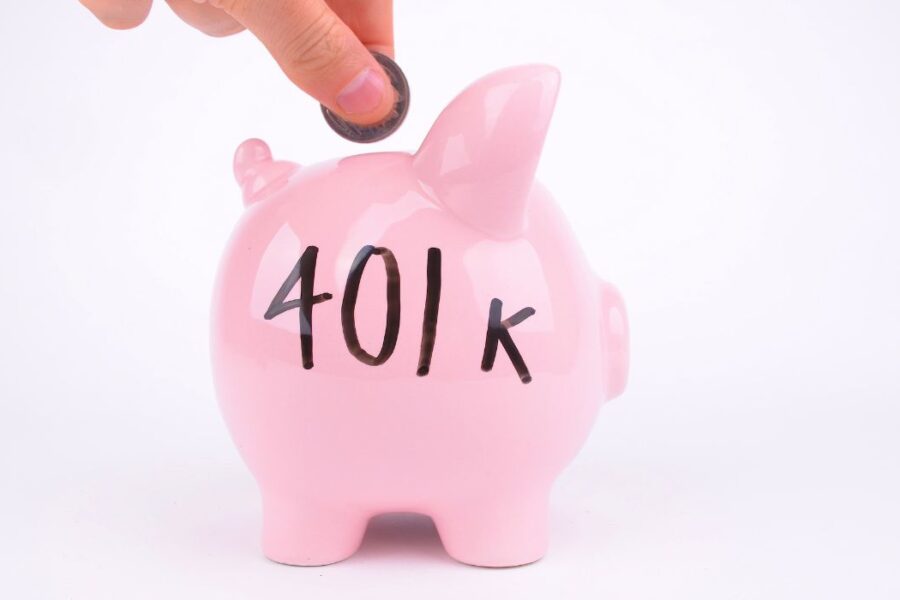
Have you ever noticed how each industry seems to have its own language? Whether talking to your plumber, mechanic, or doctor, there are all kinds of terms each uses that may sound foreign to you. This is also the case with personal finance.
There are so many different types of accounts and investments, and it seems like everything has an acronym.
A financial planner might talk to you about your HSYA (high yield savings account), your IRA (individual retirement account), or even your HSA (health savings account) as you are working on your financial plans.
Sometimes, these different account names can make things unnecessarily complicated and confusing. And when it comes to our finances, we want things to be as simple as possible.
One account you may have encountered at work or seen mentioned online or in the news is a 401k. But you might not be completely clear on what a 401k is or how it could benefit you.
401k plans are an important piece of your financial plan, so it is key to understand them. Let’s dive in and learn exactly what a 401k is and why it is important to your financial plan.
What is a 401k?
A 401k plan is a common work-sponsored retirement plan. According to a study conducted by the Transamerica Institute, 52% of employers offer 401k plans to their employees.
Known as a defined contribution plan, a 401k allows an employee to set aside a percentage of their income each month into a retirement plan. It’s a defined contribution because the percentage that an employee contributes is an amount that they predetermine.
There are contribution limits to 401k plans that can change depending on the year. For 2023, you can put up to $22,500 into your 401k plan. This limit refers to your individual contributions and doesn’t include any matching contributions your employer might make on your behalf.
What to Know About Your 401k Plan
There are a few key things to be sure you understand about your 401k plan as you start to save for retirement.
Tax Consequences
First, it is important to understand the tax consequences of the plan. Since your contributions are taken out of your 401k before you pay taxes, you don’t pay taxes on the money you contribute at the time you invest it. But you do pay taxes when you make withdrawals.
At the time you make your withdrawals, you’ll pay taxes at your current income tax rate. It’s also important to understand that both your contributions and the interest earned will be taxable.
Employer Matching
It is important to understand your employer may have a matching program set up for 401k contributions. Some employers provide incentives to their employees to contribute to the retirement plan by matching the funds that an employee contributes. This means the money you put in could be matched. Typically, employers will match an amount that you contribute up to a certain percentage.
One matching system is known as partial matching. If your employer offers partial matching, the plan may state that your employer will match 50% of your contributions up to 6% of your salary. This means that if you contribute 6% of your salary, your employer will match your contributions with another 3% of your salary. To receive the full match of 3%, you must put 6% of your salary into your retirement account. Effectively, this means that 9% of your salary will be contributed to your 401k plan annually.
Your employer might also offer dollar-for-dollar matching. This means for each dollar you contribute, they will also contribute a dollar. You might see this kind of plan described as dollar-for-dollar matching up to 5%. This means if you put in 3%, they will also contribute 3%. To get the full value of the match, you would need to put in 5% of your salary.
In both matching scenarios, you can contribute above the required amount. But your employer will stop matching it at the maximum stated in the plan. If you contribute less than the maximum stated in the plan, your employer will still match it just at a lower level.
Know Your Vesting Schedule
In a retirement plan, the money you contribute is always yours to roll into a new plan or move if you change jobs. The money your employer contributes, however, is not always yours. The employer retains some of their contributions for the first several years. They do this for two reasons. First, it can help reduce turnover because employees may stay in their positions longer to have access to the matching funds. Second, it can also reduce the cost of employees leaving.
The way that employer contributions are shifted to the employees is through a vesting schedule. A vesting schedule determines how much of your employer’s contributions you own at any given time at your job based on how long you’ve been with the company.
Here’s an example of how a vesting schedule might work. Say your 401k plan has a 5-year vesting schedule. This means at the end of your first year working for the company, if you were to leave, you could take 20% of what your employer contributed to your retirement plan with you. After two years, you could take 40%. The percentage you are entitled to would continue to increase by 20% each year until, at the end of 5 years, you could take 100% of your employer’s contributions if you left the company.
Why a 401k Should be Part of Your Financial Plan
Having a 401k plan offers you several benefits and should be a part of your financial plan. A 401k plan can expose you to new investment opportunities and help you diversify. It can also help you grow your retirement through employer-matching contributions.
Encourages Saving
Another great benefit of a 401k plan is it can help you find money to save toward retirement. While having the money taken out of your income before you get paid can seem tough because your paycheck will be a bit smaller, it can help you be sure you are saving.
Often people think they will get through the month with the money they need and save what is left. But, by the end of the month, there’s typically nothing left to save. Instead, having the money pulled out of your paycheck before you receive it will ensure that you save, and you can then use what’s left to make your budget.
Decreases Your Taxable Income Now
Your 401k can decrease your taxes now. A 401k plan is known as a tax-deferred retirement plan. This is because the contributions come from your paycheck before taxes are taken out, which decreases your taxable income. You’ll pay taxes on your distributions for the plan when you retire. Typically, people see their tax brackets decrease in retirement because they are no longer earning a salary. So when the distributions are taxed, they may be taxed at a lower rate.
It Can Move with You
You can take your 401k with you if you change jobs. All your contributions from day one and your employer contributions based on the vesting schedule can be rolled over into a private plan or a new company plan if you decide to take a new job. This can help your retirement continue to grow.
More Income in Retirement
Having a 401k plan may also give you more than one income stream in retirement. While Social Security benefits can be helpful when you reach retirement age, they may not afford you the retirement you’d like to enjoy. Having another separate retirement plan in the form of a 401k can give you additional income that can help you reach your retirement goals and remain self-sufficient.
Saving for retirement is important. It can give you freedom and increase your options and independence when you’re ready to leave the workforce. A 401k plan can be useful. It can help you save money before you ever see it in your paycheck. And because a 401k is a tax-deferred retirement account, it can reduce your current tax liability. With the possibility of an employer match, the ability to help you diversify, and the flexibility to move the account when you change jobs, a 401k is a key piece of your financial plan.
It’s important to understand what 401k options might be available to you through your job. To learn more about your options and sign up, speak to someone in HR at your company today. It’s never too early to start saving for retirement!


